John Bozeman's Historic Highway
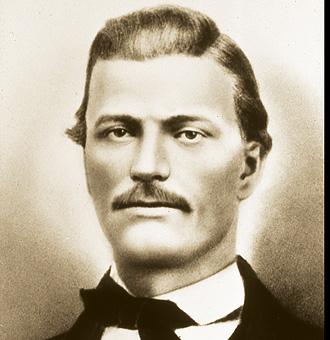
Driving the interstates and two lanes from Cheyenne, Wyoming, to Virginia City, Montana, one cannot help but drink in the grandeur of the surrounding awe-inspiring country. In breadth and scope this is an environment like no other—lush, memorable, and full of promise. Surprisingly, this is also a place of explosive confrontation between determined and aggressive peoples who violently responded to John Bozeman’s bloody trail of destiny.
John Marion Bozeman was born in 1835 in Pickens County, Georgia. His father left his wife and five small children to follow the gold rush to California in 1849. Receiving no word from him, the family assumed he died on the overland journey.
At the age of twenty-six, Bozeman followed his father’s example, leaving his wife and three young daughters in hopes of securing his family a small fortune out West. Finding Colorado less than profitable, the tireless adventurer made his way to new diggings at Bannack, Montana, in January of 1863, but things still did not pan out.
The steady stream drifting westward soon convinced Bozeman to locate and promote a shorter, more direct overland road from the east to Montana’s burgeoning mining camps. In 1863, accompanied by a seasoned mountaineer named John Jacobs, and Jacobs’ eight-year-old half-Flathead daughter, Bozeman laid out the course of what would eventually become the Bozeman Trail.
Together the men identified a general route, one that diverged from the Oregon Trail at a point on the North Platte River near present-day Glenrock, Wyoming. Heading north, their ambitious cutoff threaded between the Big Horn Mountains and the Black Hills—the last great hunting ground of the Northern Plains Indians. It then followed the Yellowstone River to Bozeman Pass and continued through the beautiful Gallatin Valley before reaching its terminus in southwestern Montana. Roughly 500 miles, the trip took three months by wagon, but it was faster and better watered than alternative routes. It was also significantly more dangerous.
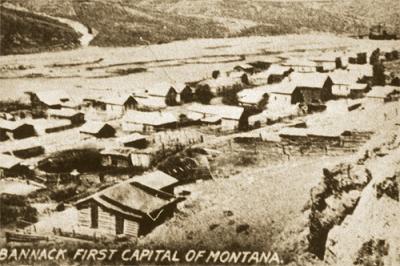
In the summer of 1863, Bozeman, Jacobs, and a Spanish guide named Rafael Gallegos piloted the first wagon train over the newly identified road. Obviously enamored with the life-changing adventure he was undertaking, fourteen-year-old James Kirkpatrick described Bozeman as “a tall, fine looking Georgian of somewhat light complexion,” who “wore a fine suit of fringed buckskin and had the looks and ways of a manly man.”
The slow-moving caravan of forty-nine wagons and nearly ninety wayfarers, after traveling some 145 miles, encountered 150 Sioux and Cheyenne Indians near present day Buffalo, Wyoming. As pioneer Samuel Wold recorded in his diary, the natives warned the train “not to proceed further through their country—that they were combined to prevent a road being opened through here—that if we went on we would be destroyed . . .”
The Indians’ position on the matter could not have been plainer. Unable to secure military escorts, the headstrong Bozeman and nine others nonetheless ignored the warning and made a beeline for the Gallatin Valley. The majority, in contrast, made the bitterly disappointing decision to abandon their hopes along with the Bozeman Trail. Annoyed that the trip to Montana would be delayed by weeks, and apparently unaware of the tremendous demands placed on the U.S. Army during the Civil War, Wold complained that “The government ought to give Emigrants all the assistance they wish in their efforts to develop the country.” In time, the government would listen.
Upon arriving at the Gallatin Valley, Bozeman learned of a new strike at Alder Gulch and that most of Bannack’s residents had rushed to populate neighboring Virginia City. Over the course of that summer—while the tide of the Civil War turned at Gettysburg and Vicksburg—thousands of newcomers swarmed toward one of the richest placer gold discoveries ever found in the northern Rocky Mountains.
Three wagon trains, carrying perhaps as many as one thousand emigrants, successfully made it to Virginia City in 1864, despite periodic harassment by the native inhabitants of the region. Bozeman himself guided the first train, arriving there in late July. He then returned to the budding townsite of Bozeman, which soon developed as a crucial supply center “standing right in the gate of the mountains ready to swallow up all the tenderfeet that would reach the territory from the east, with their golden fleeces to be taken care of . . .”
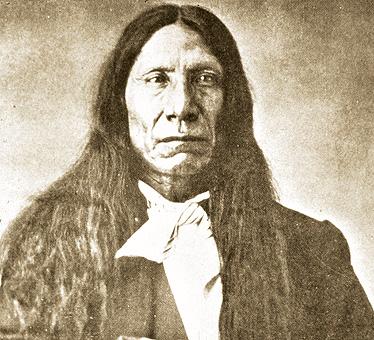
The relatively successful travel season, coupled with the creation of Montana Territory, led to even greater enthusiasm for the Bozeman Trail. Entrepreneurial interests, such as the Bozeman to Fort Laramie Wagon Road and Telegraph Company developed ferry crossings on the Yellowstone, Clark’s Fork and Big Horn Rivers. There was even talk of a government mail route along the thoroughfare. By April of 1865, Robert E. Lee had surrendered at Appomattox, allowing the Army to increasingly focus its attention on Indian troubles out West.
But at the very moment when prospects for travel along the Bozeman Trail seemed brightest, the federal government temporarily closed the route to overland travel and set in motion a bloody chain of events that would ultimately lead to the trail’s demise. Hoping to settle the Indian question once and for all, Brigadier General Patrick E. Conner initiated retaliatory measures against the native inhabitants of the Powder River Country, stating unequivocally: “They must be hunted like wolves.”
Conner and his seasoned troops successfully established Fort Reno, the first of several military outposts in the region, but they had little luck in quelling violence in the area. To the contrary, his efforts had the effect to further unite several bands of Lakota, Cheyenne, and Arapaho against their common enemy.
Tensions along the Bozeman Trail were heightened to a fevered pitch. As Black Elk later related to his biographer, John Neihardt, “It is like some fearful thing in a fog, for it was a time when everything seemed troubled and afraid.”
Bowing to the cries of whites who clamored to reach Montana as quickly as possible, the military reopened travel on the Bozeman Trail in 1866. The conclusion of the Civil War, together with new gold discoveries at Last Chance Gulch and Silver Bow Creek, inspired a post-war exodus of some 25,000 to the West. Of these, perhaps 2,000 gold seekers, homesteaders, merchants, and ruffians followed Bozeman’s Trail to the Big Sky Country. With them came war-weary soldiers with fresh reappointments in an unknown land.
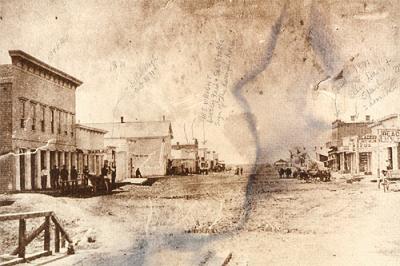
In July of that fateful year, the military occupied the region and, with its protection, Bozeman’s road assumed prominence as the most popular route to the Northwest. By the end of 1866—the final year of emigrant travel—a total of roughly 3,500 people and 1,700 wagons had traveled along it.
To meet growing demands, soldiers quickly erected two new outposts—Forts Phil Kearny and C. F. Smith—actions which, not surprisingly, brought enmity with area Indians to the boiling point. The situation was complicated further by the arrival of officers like Colonel Henry B. Carrington, a completely inexperienced political appointee, and his motley crew of mostly green recruits. Carrington pledged “to whip the Indians” who “have given me every provocation,” but throughout the summer and fall of 1866 his men tried in vain to thwart the efforts of emboldened Sioux and Cheyenne raiders. In disgust, the famous frontiersman Jim Bridger complained to Carrington that his men didn’t “know anything about fighting Indians.”
Into this scene walked Captain William J. Fetterman, a brash and seasoned Civil War veteran who once boasted “with eighty men” he “could ride through the Sioux nation.” On the cold, clear morning of December 21, 1866, Red Cloud, Crazy Horse and an estimated 2,000 Lakota and Cheyenne warriors called Fetterman’s bluff. In the bloody hell that followed, some 40,000 arrows were fired—a thousand for every minute the fight lasted. Under Red Cloud’s able leadership, Fetterman and eighty others were annihilated in the worst disaster suffered by the army at the hands of Indians prior to Custer’s defeat at the Battle of the Little Big Horn. Fetterman’s Fight produced more casualties than the combined total of all other encounters on the Bozeman Trail and accounted for nearly eight percent of the army’s killed-in-action in forty-nine years of warfare on the Trans-Mississippi frontier.
The following April, John Bozeman was also killed. While on a trip along his trail with Tom Cover to secure governmental flour contracts, he was murdered on the Yellowstone River. The accepted story at the time was that he was killed by a marauding band of Blackfeet Indians, but inconsistencies in the information have, over time, resulted in a mystery that variously points the finger at Cover (an interesting individual who himself died under mysterious circumstances years later) or possibly at a jealous husband of one of the few women in town.
Whatever the cause, Bozeman’s death prompted an hysteria that led directly to the establishment of Fort Ellis, on the eastern edge of the Gallatin Valley. The fort not only provided protection and a sense of security for the fledgling community of Bozeman, but also provided lucrative markets to local farmers and merchants. The locality steadily prospered and today is considered one of the most thriving and livable communities in the Rocky Mountain West.
Bozeman’s Trail, however, did not enjoy the same fortune. While shock and outrage over the trailblazer’s death played loudly in Montana, many questioned the wisdom of a prolonged Indian War on the Northern Plains. Back East, other matters took precedence. Radical Republicans were in the process of carving the recently defeated South into military districts and, at the point of a bayonet, of forcing their Reconstruction agenda upon a broken and battered Confederacy. Meanwhile, the Army came under increasing demand to facilitate construction of transcontinental railroads.
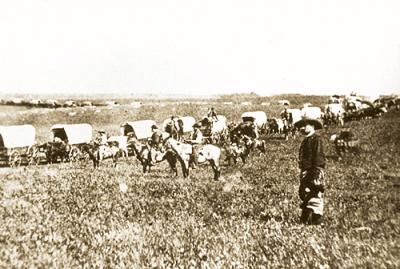
Following the Fetterman tragedy, with the Montana gold camps declining, immigrant travel on the Bloody Bozeman ended abruptly and the deadly thoroughfare again became exclusively a military road, existing only to support the very outposts that were originally established to protect it. In August of 1867, overwhelming numbers of Indians and small parties of whites participated in the celebrated Hayfield and Wagon Box fights, but thanks to new breech-loading rifles, the soldiers were able to avoid Fetterman’s fate.
By 1868, most policy-makers had concluded that it was less expensive to feed the Sioux and Cheyenne than to fight them. In March, Ulysses S. Grant gave orders to abandon the forts along the Bozeman Trail. Once the troops had pulled out, Red Cloud and his warriors set fire to Forts C. F. Smith and Phil Kearny, leaving nothing but smoldering ruins. They must have thought that they had driven the whites from their hunting grounds forever.
That fall, as the Union Pacific crossed southern Wyoming on its way to completing the Transcontinental line at Promontory Point, Utah, Red Cloud negotiated the Fort Laramie Treaty of 1868 with General William Tecumseh Sherman and other peace commissioners. Scholars consider the historic agreement a milestone, and to this day Red Cloud is remembered as one of the few Indians in American history to make the federal government back down from achieving an important territorial goal.
After this bittersweet success Red Cloud retired to reservation life, seemingly aware of his limitations. “Now we are melting like snow on the hillside,” he later told President Grant, while visiting Washington, D.C., “while you are growing like spring grass.”
The peace that followed Red Cloud’s War was short lived and, in many respects, the Bozeman Trail was but an initial chapter in the unfolding drama that would define the future of Montana. In the decade that followed, Sitting Bull, Chief Joseph and others would also try to resist the growing onslaught of whites within the Treasure State. Their efforts proved less successful.
The uncommon beauty experienced even today while driving along the historic Bozeman Trail, hides an uncommon story of struggle and tragic loss. It is a story worth remembering.
~ Derek Strahn is a history teacher at Bozeman High School. During his spare time he also works as an historic preservation conslutant. He was the principle historian on the recently-approved Butte-Anaconda National Historic Landmark District nomination. He can be reached at [email protected].
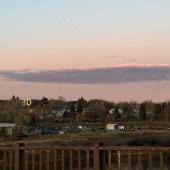
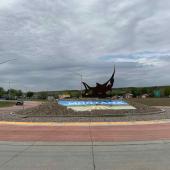









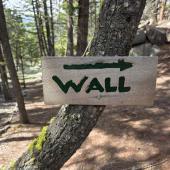
Leave a Comment Here